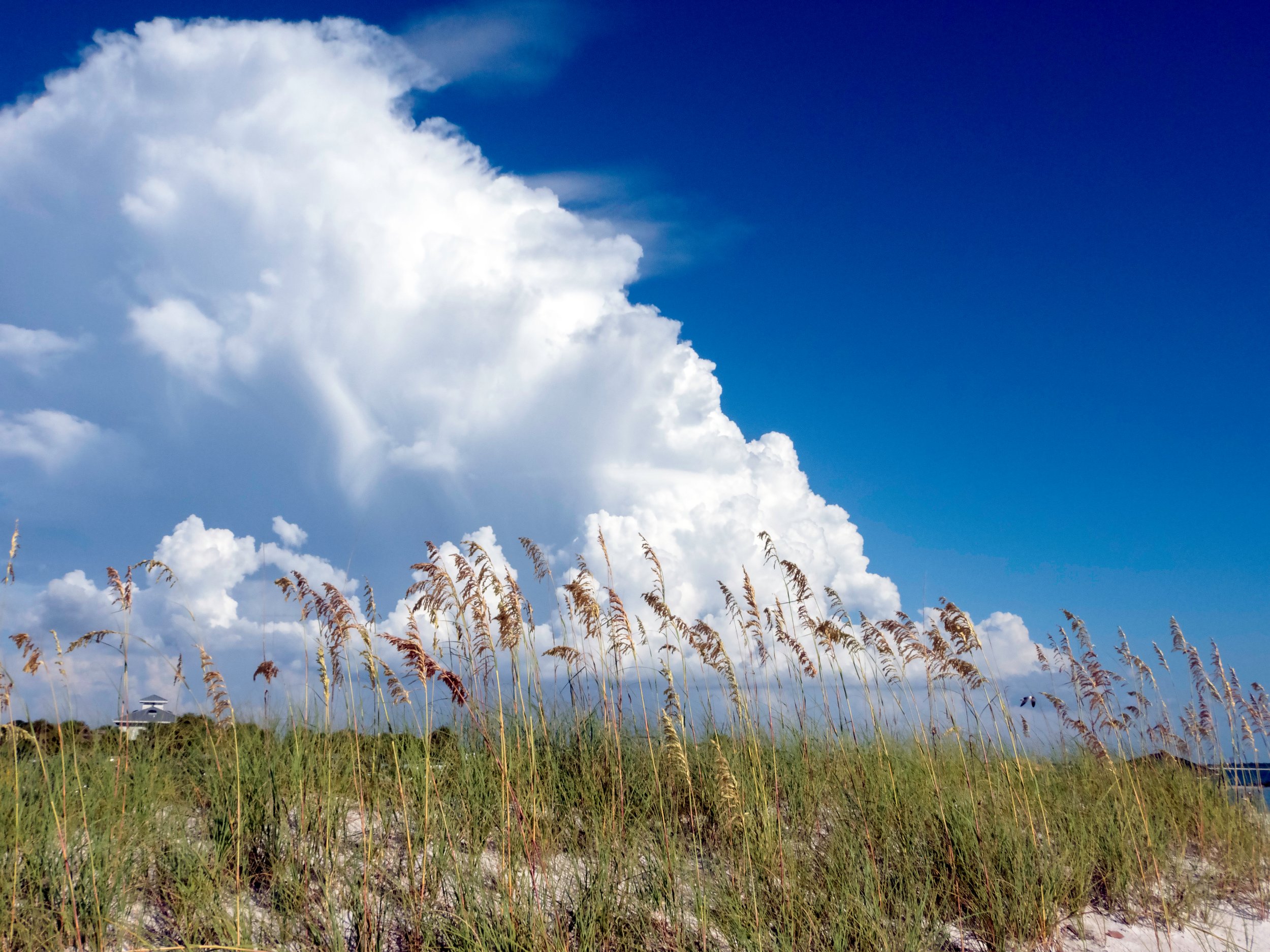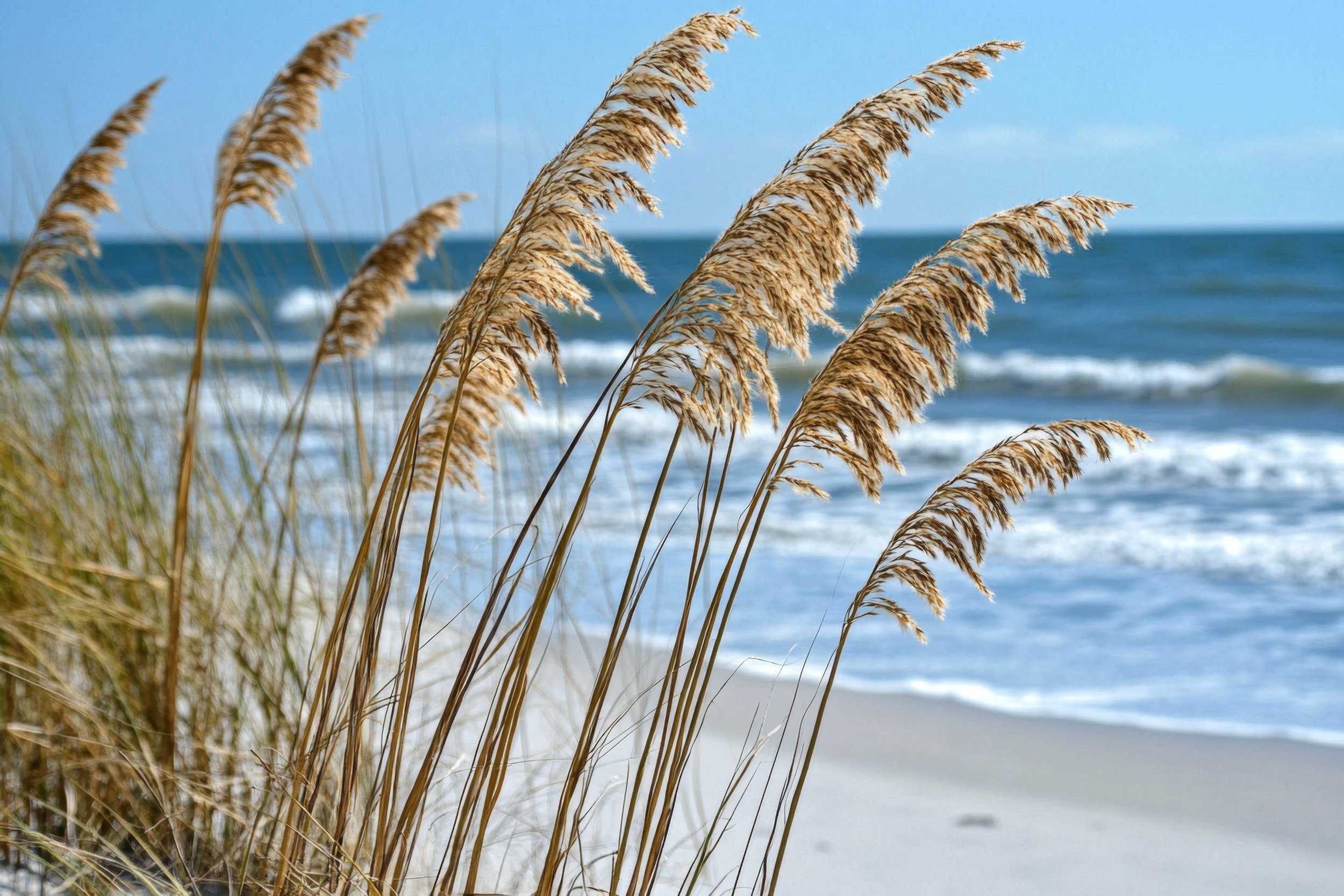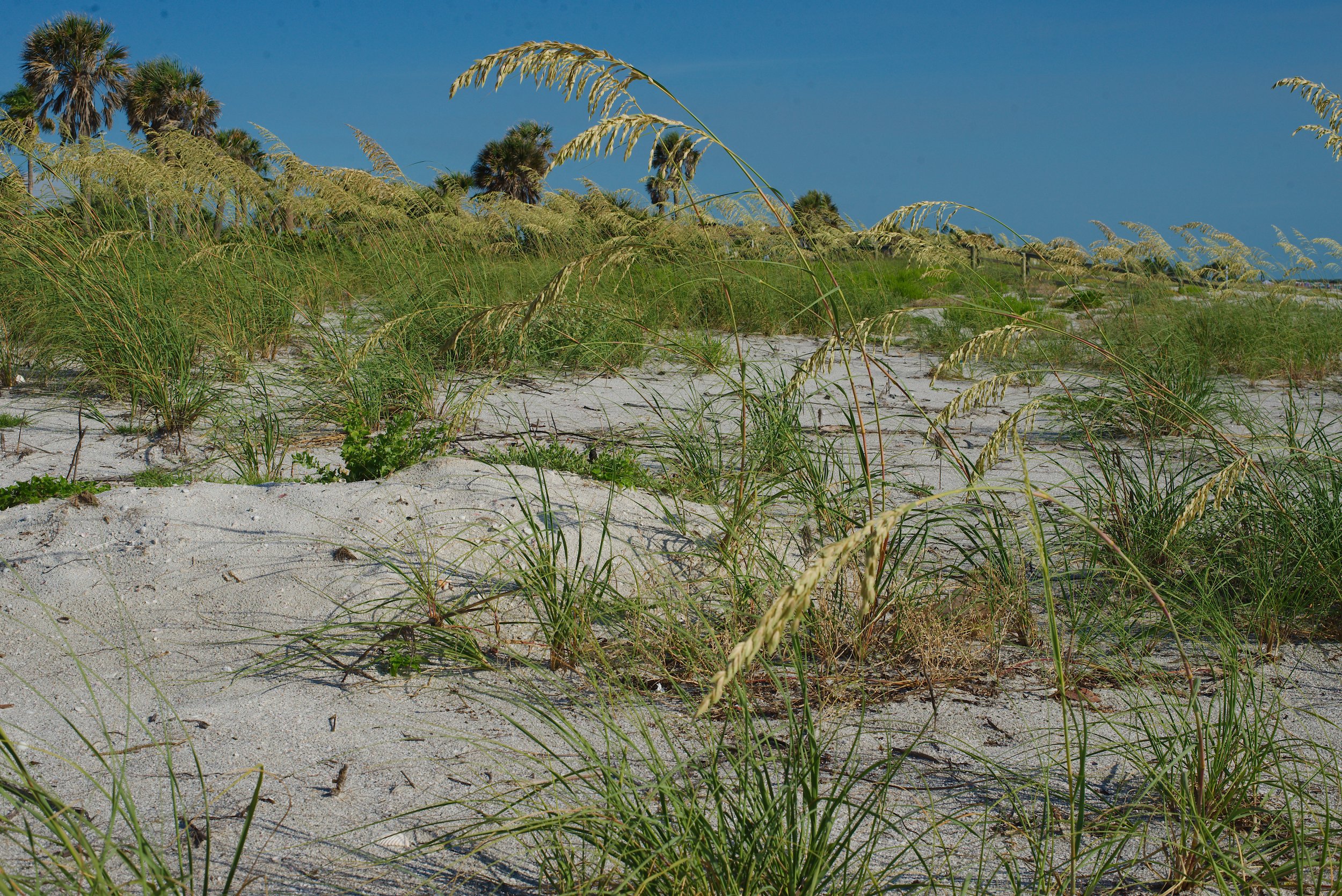Uniola paniculata
Native: Coastal southeastern U.S., including the Atlantic and Gulf coasts
Hardiness Zone: USDA Zones 8–11
Light Range: Full sun
Soil Characteristics: Sandy, well-drained, low fertility
Tolerances: High salt, drought, wind, and poor soil; highly erosion-resistant
Landscape Use: Dune stabilization, coastal restoration, native gardens, ornamental grass
Height: 2 – 6 ft
Spread: 1 – 2 ft
Growth Rate: Slow
Leaf Size: 18 to 36 inches in length
Leaf Persistence: Evergreen
Wildlife: Supports butterflies; provides habitat and food for coastal wildlife
Roaming Roots Tips:
Sea oats’ roots can grow over 10 feet long—just like anchors—holding beach sand in place during storms!



